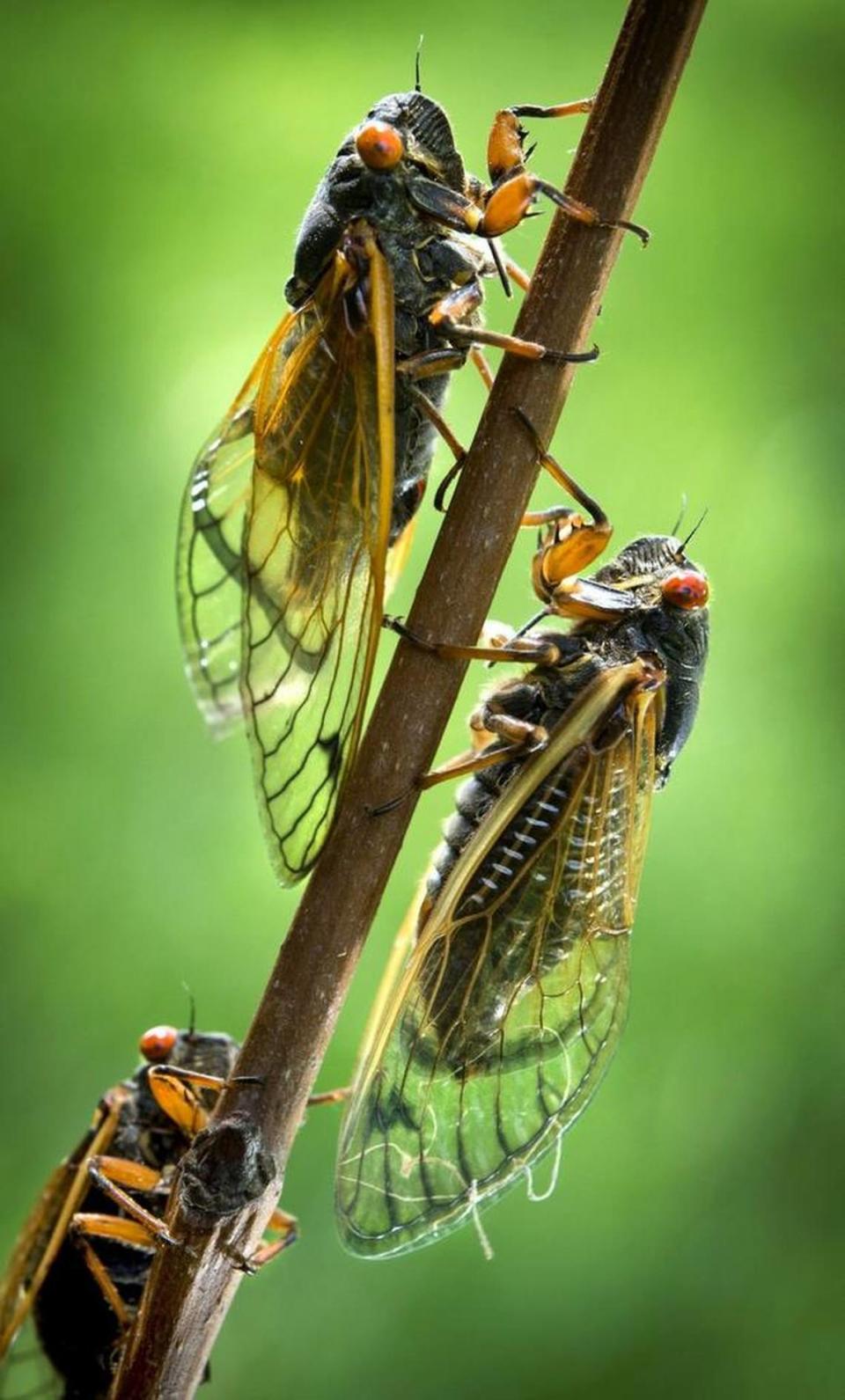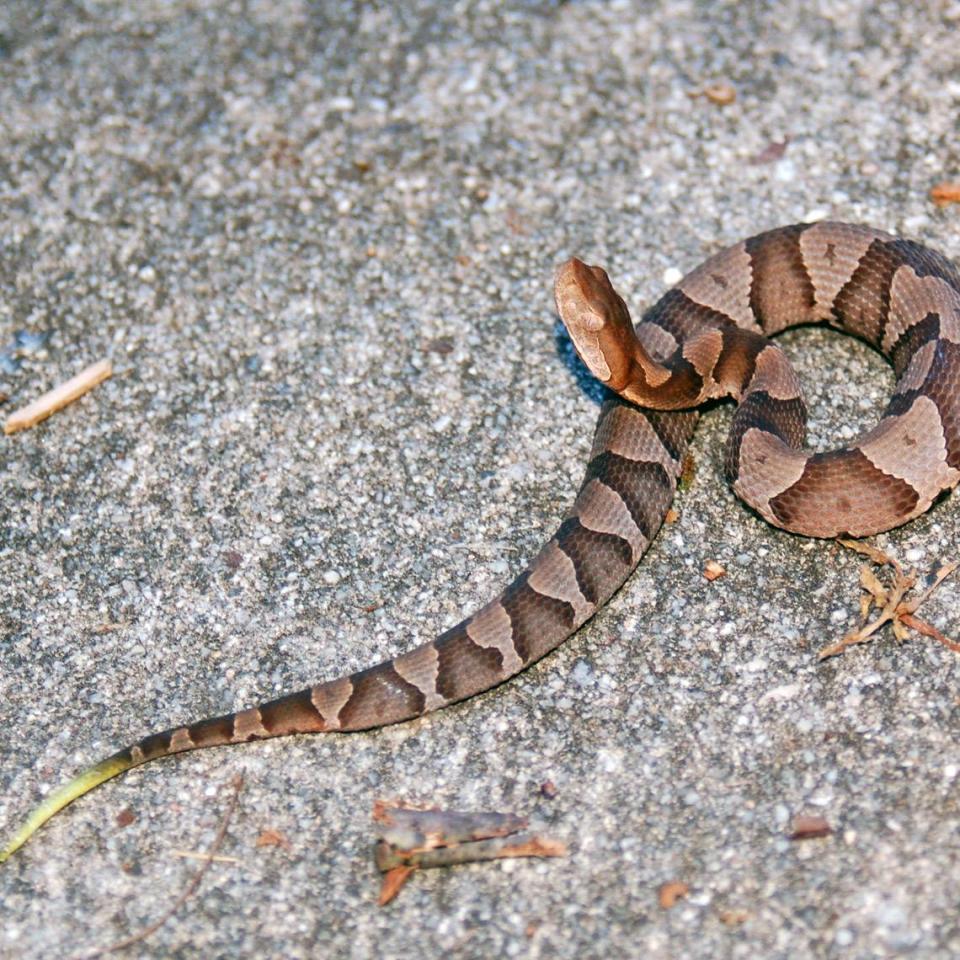Cicadas are at their peak — so you may see more copperheads. Snake expert explains
The dog days of summer are accompanied by a familiar chirp.
The sometimes-hissy, sometimes-clicky noises of cicadas — fairly large insects with long wings — are the soundtrack to hot evenings in the Carolinas.
And copperheads, our region’s familiar venomous snake, often have cicadas for dinner.
That means you’re extra likely to spot the snakes this time of year, as cicadas are emerging to shed their shells and sing their summer songs.
The News & Observer chatted with Jeff Hall, snake expert and wildlife biologist with the NC Wildlife Resources Commission, to learn more about snake and cicada activity this time of year — and what that means for the rest of us.
What are cicadas? What do they look like?
Cicadas are medium to large insects with long, transparent wings, which are held peaked over the body when at rest. There’s one species of them in North Carolina.
“Often, the most deafening choruses of annual cicadas are during the hottest days of the year, leading to another common name for this group: the dog-day cicadas,” Hall said.
▪ Annual dog-day cicadas are large, stout, dark insects with lighter markings and greenish markings on the wings. These occur every summer. There are seven species of them in North Carolina.
▪ Periodical cicadas have reddish-orange eyes, and they are usually seen by the thousands. These emerge on longer cycles, either every 13 or 17 years.
In warm months, male cicadas sing a shrill mating call to attract females. After mating, females jab their eggs into the bark or twigs in a double row up to four or five inches long, according to NC State Extension.
Tiny pale nymphs hatch six to ten weeks later and drop to the soil. There, they burrow in for years. While in the soil, the nymphs feed on the roots of many kinds of trees.
Cicadas are sometimes incorrectly called “harvest flies” (but they’re not flies) or “locusts” (which are grasshoppers).

When do cicadas emerge in NC?
Cicada larvae begin making their way from their underground nests to shed their shells starting early June and ending late September, Knue 101.5 reported.
In North Carolina, annual cicadas come out during the hottest days of the year, which are often in July and August.
A periodical brood is not expected in our state 2023 (though some have been popping up early in the Asheville area). But remember, the annual cicadas show up every year, so that doesn’t mean NC is cicada-free.
There is a “massive emergence expected in 2024,” Gene Kritsky, dean of behavioral and natural sciences at Mount St. Joseph University, told Asheville.com.

Do summertime cicadas mean more copperheads?
No, the presence of cicadas does not mean “more copperheads.”
“What it may signify is a greater opportunity for people to see copperheads at times,” Hall stressed.
This is especially true around oak trees, which support good populations of cicadas.
That’s because cicadas — primarily in the nymph or larval form, although they also will eat freshly molted adults — are a common prey item for copperheads.
“As cicadas are emerging, copperheads may congregate in numbers to take advantage of the relatively easy meal of nymph cicadas emerging from the soil and climbing up the trees to shed their skins and morph into adults,” Hall said.
Copperheads are most active at dusk this time of year, hoping to beat the sweltering daytime heat like the rest of us.
This also corresponds to the time that cicada nymphs often emerge to go through metamorphosis (though some do this during daytime).

(Safely) watch copperheads, cicadas this summer
Cicadas can be pretty much anywhere there’s soil and trees, though they especially love large oaks.
“If you have large oak trees on your property and you notice large numbers of cicada nymph skins left behind from molting, you might go out in the evening just around dark or a little after and see if you get a glimpse of this fascinating interaction between copperheads and cicadas,” Hall said.
“Be safe about it — make sure you have a good light and watch your step as you investigate. But you might be treated to some really amazing wildlife theater!”
How to identify a copperhead snake
Adult copperheads have the following characteristics:
• Pattern: The hourglass-shaped patterns on their backs look like Hershey’s Kisses.
It can be tricky to rely just on markings, especially if you haven’t seen many copperheads in person or you only caught a quick glimpse of it.
“There can be a lot of variation in color and pattern with flecks and specks between the kisses,” said Talena Chavis, certified wildlife relocation expert and owner of NC Snake Catcher in Cary.
• Color: Copperheads are brownish-gray. They easily camouflage within dry leaves and wood debris.
Newborn or very young copperheads have the same color and pattern as adults, but their brightly tipped tails make them stand out.
“It has a light brown, coppery or tan (sometimes grayish or pinkish tan) background color, with strongly contrasting chestnut brown crossbands shaped like an hourglass or dumbbell,” the Wildlife Resources Commission says.
• Length: Adult copperheads can grow to about three feet long.
For a detailed look at the copperhead snake, visit newsobserver.com/news or ncwildlife.org.
It’s ‘baby copperhead season’ in NC. Here’s what to know about the juvenile snakes
Why copperhead snakes like coming onto our front porches — and how to keep them away

